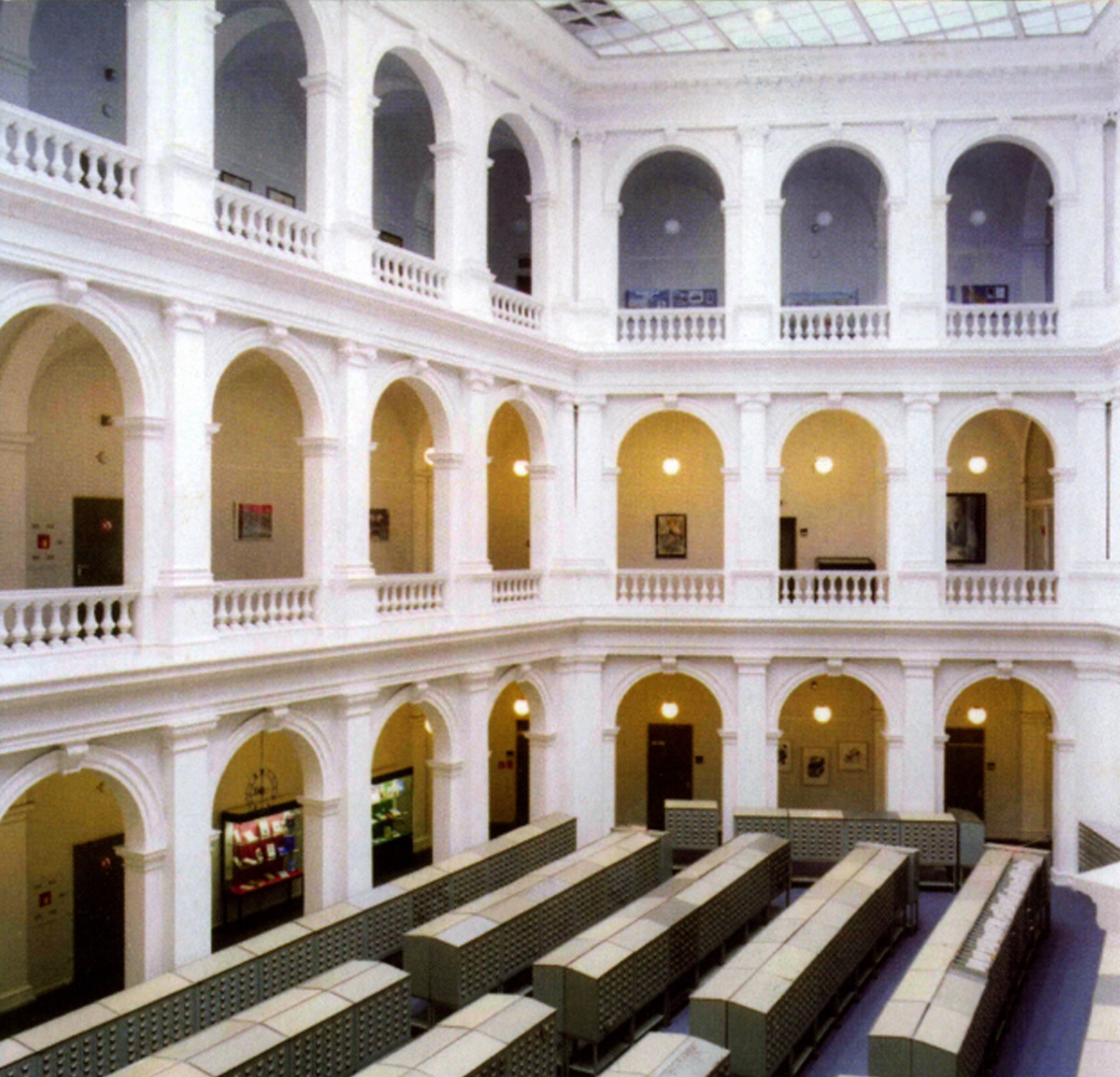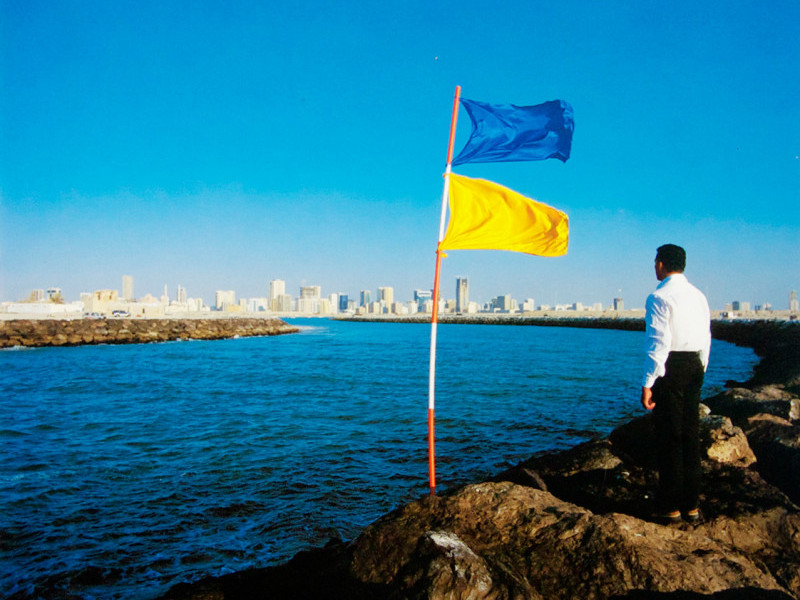
University Library, 2000
Candida Hofer
University Library, 2000
C-print
search


Candida Hofer
University Library, 2000
C-print
Michael Diers writes on Hofer's interiors that "The balance and calmness of the pictures are supported by the square format of the photo." As in many of Hofer's pictures, the aesthetic is one of lines and areas, grids and structures, ornaments and abstractions, as well as light and reflection.
The brief, simple titles of the 'pictures' offer only limited clues. But within the picture it is possible to locate further sources of information. Through a filter of sedimentary histories Hofer intervenes the subject's desire in transition between spatial openness and its administration deposited formally in descriptions of architectural closure.
Recording the picture content matter-of-factly, without inciting the voyeurism of bodies in space, at the same time allows the content to speak for itself and to the viewer, with more accord for the construction of his or her subjectivity.
"This interaction of description and explanation, of reporting and enchanting is characteristic of Candida Hofer, whose gaze is observant, analytical and yet poeticising. Her own miniature reflection, dressed in red, is visible in the" Speicherstadt" picture, where it bounces off three of the highly polished kettles. But the photographer is not playing guessing games. She does not see mysteries in or put secrets into her pictures, she uses her camera to gently reveal them, by turning upon objects and spaces a gaze that is attentive and patient, discreet, sometimes laconic and quietly humorous. With an eye for unspectacular, unimposing phenomena, she often approaches her topics indirectly."
Dier (from "Hamburg" Walther Koenig 2002)
Hofer's work deals with these discreet stories, if we can call them that, 'contained' by the evidences of reification. i.e., those ambiences, or spirits of vacuums, empty of people yet charged with absent presence. Dier writes, "To create her form of portraits, Candida Hofer needs only the spaces in which people work, relax or interact."
Such "absent" animation is the techno-cultural implication of the reified experience of the modern city space, interior or exterior, connoting the human. For example, photography often uses human figures only to purely decorative effect or prefers its disappearance, carefully analysing each indefinite digital shape from the evidences of surveillance panoptics. Hofer's pictures do not suggest at human presence. They fully declare their actual absence. Anticipation is registered as if about to occur rather than 'about to occur'. The photographer's unrecorded presence is an anxious
element of intrusion.
In the photographic text one is surprised by the Barthesian punctum yet for this writer, the puntum has been dispersed. Is it not dislocated from the pleasure of the gaze? Why is it that in the same picture there is an uncanny similarity between the relationships? Their collected 'significance' moves from one mis-er-scene, to another. Hofer is aware of this replicating similitude of mood, as charged up ecstactic yet anxious. Dier writes on the series" Hamburg" of "The fish cutter in the museum trawls its way across the sparkling terracotta floor and between the pillars as if through the Strait of Gibraltar - which, according to the ancients were flanked by the Pillars of Hercules, with their motto of "non plus ultra". Model windmills wait like insects trapped beneath glass domes for the day of their release. Even Anton Melbye's "Ship-wreck on a Stormy Sea" from 1846 in the foyer of the "Ubersee-Club" seems to have been transformed into an aquarium, or filled with the legendary 'Green Light', at the very least."
All the paraphenalia of history stand in the light of spaces at once hierarchical, functional and architectural, a light which is supreme and administrating like a catalogue of references, both panoptic and clear, yet incapable of interpreting this 'catalogue'. Just as the 'series' (Hofer's is not strictly a method or strictly 'archive photography', shifting as it does in viewpoints and body-axis, eye level, and informal specificity) is not defined completely in terms of numbers, topics or typological order of the photographs, the status of a city image in the sense of its overall portrait is also uncertain. Hofer's resistence to foreclosing anyone interpretation allows for the de-specularisation of the photographic image - apparatus and the regime of its power relations.
Candida Hofer chooses to use the word 'picture' when she talks about her images, and less often the expression 'photography'. It is not the technique which should be over-emphasised, but the result which should be examined against the 'craft', an engineered commodity in consumer society and image culture, which begs the question of a re-entry into photography's culturally
shaped use-value.
On Hofer, Dier writes of a series, "One chooses firstly a city, then a building and finally a room C!§ the subject, decides on the location of the camera and the central theme, picks a shutter setting, exposure and time for the photograph. Later the format, detail, printing and framing of the photo are defined, after that the location for the exhibition has to be agreed. This sentence summarizes the concept, creation and presentation of a series of pictures. Yet it says nothing about the all important artistic issues behind it, in particular about the interaction of perception, view-point and idea. These are expressed in the pictures and can be found ther
after careful observation". Michael Dier Hamburg Walther Koenig 2002
PL

Sharjah Biennial 6